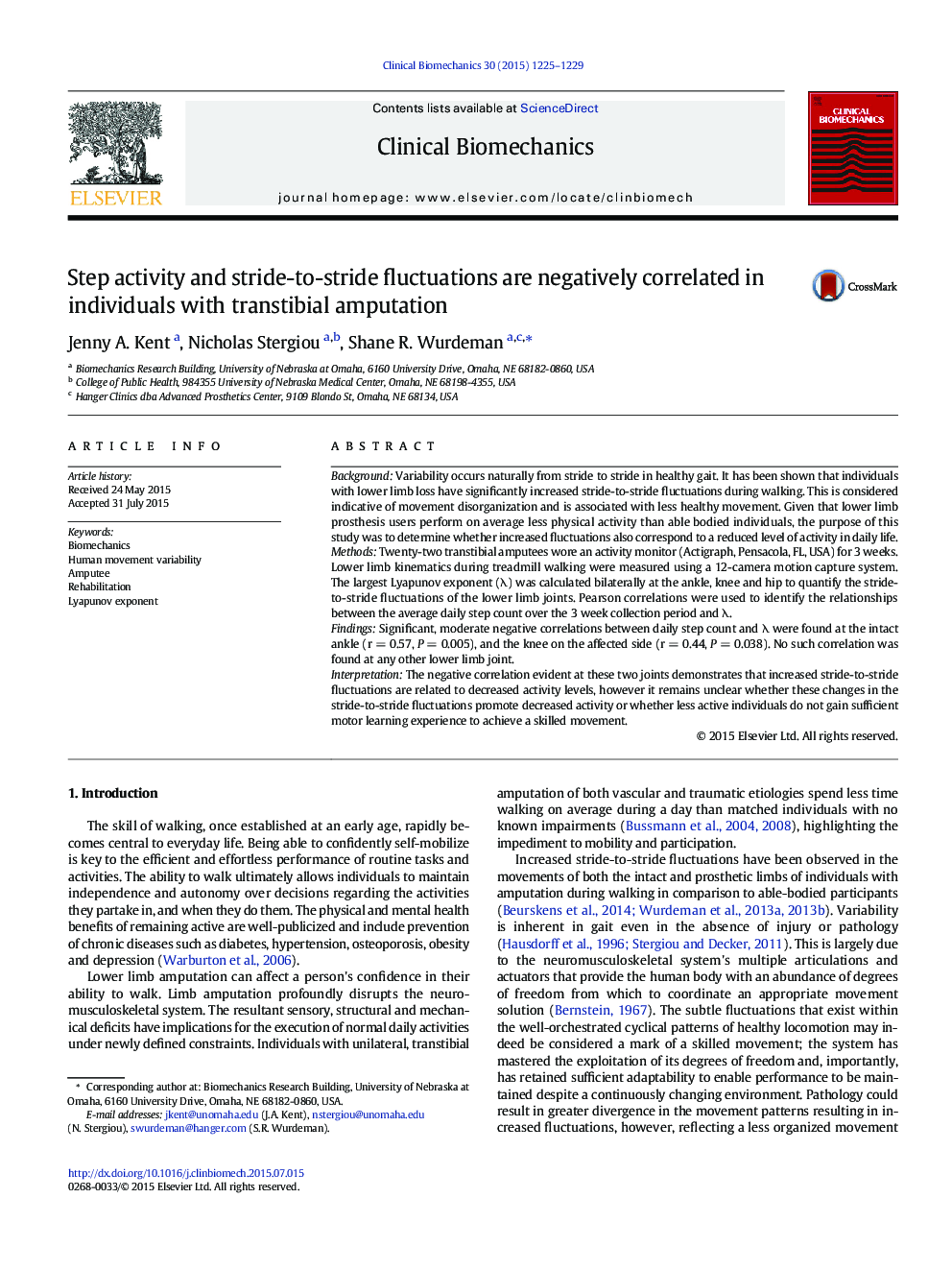| Article ID | Journal | Published Year | Pages | File Type |
|---|---|---|---|---|
| 4050096 | Clinical Biomechanics | 2015 | 5 Pages |
•Transtibial amputees exhibit increased stride-to-stride fluctuations in walking.•Lower limb amputees walk less on average than fully able-bodied individuals.•We investigate the relationship between physical activity and gait variability.•Stride-to-stride fluctuations of the sound ankle were lower in more active amputees.•No such relationship was found at the prosthetic ankle.
BackgroundVariability occurs naturally from stride to stride in healthy gait. It has been shown that individuals with lower limb loss have significantly increased stride-to-stride fluctuations during walking. This is considered indicative of movement disorganization and is associated with less healthy movement. Given that lower limb prosthesis users perform on average less physical activity than able bodied individuals, the purpose of this study was to determine whether increased fluctuations also correspond to a reduced level of activity in daily life.MethodsTwenty-two transtibial amputees wore an activity monitor (Actigraph, Pensacola, FL, USA) for 3 weeks. Lower limb kinematics during treadmill walking were measured using a 12-camera motion capture system. The largest Lyapunov exponent (λ) was calculated bilaterally at the ankle, knee and hip to quantify the stride-to-stride fluctuations of the lower limb joints. Pearson correlations were used to identify the relationships between the average daily step count over the 3 week collection period and λ.FindingsSignificant, moderate negative correlations between daily step count and λ were found at the intact ankle (r = 0.57, P = 0.005), and the knee on the affected side (r = 0.44, P = 0.038). No such correlation was found at any other lower limb joint.InterpretationThe negative correlation evident at these two joints demonstrates that increased stride-to-stride fluctuations are related to decreased activity levels, however it remains unclear whether these changes in the stride-to-stride fluctuations promote decreased activity or whether less active individuals do not gain sufficient motor learning experience to achieve a skilled movement.
